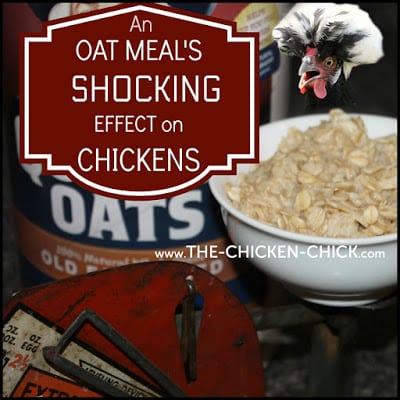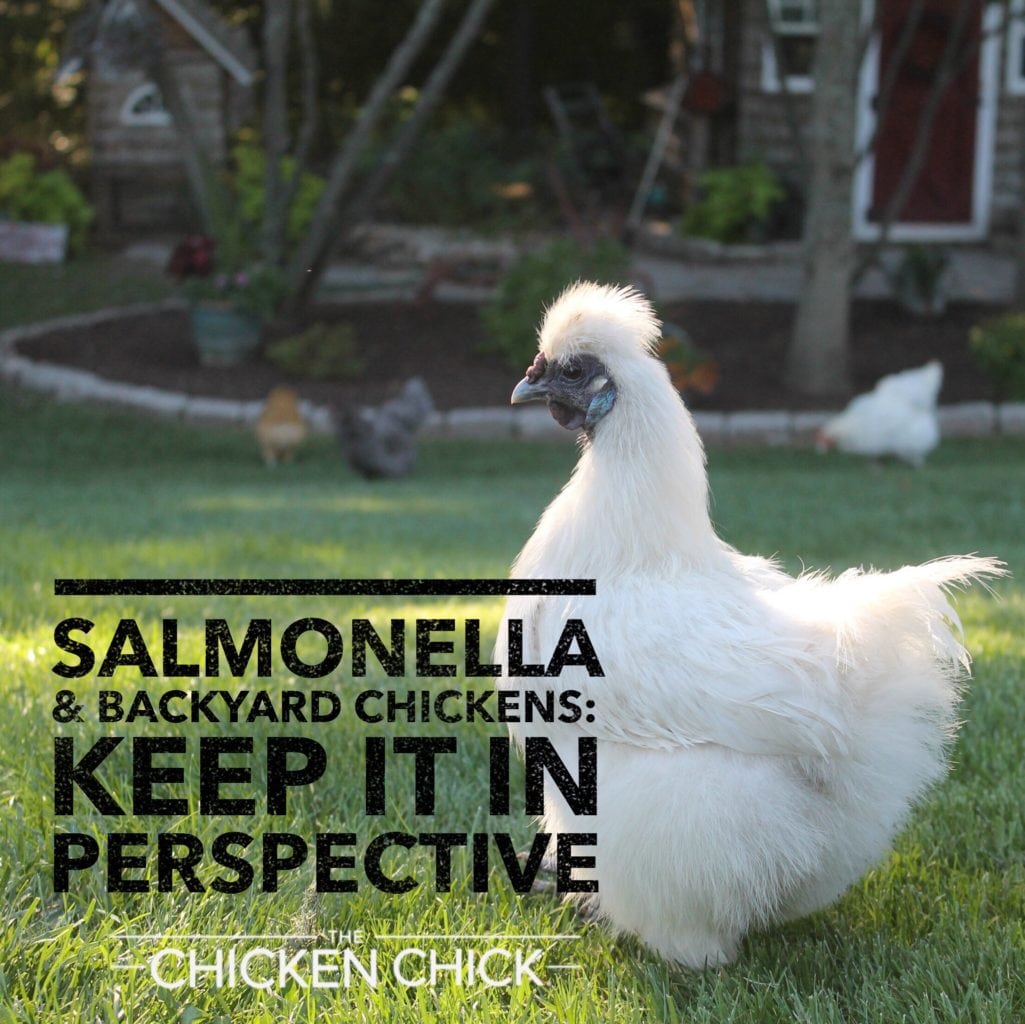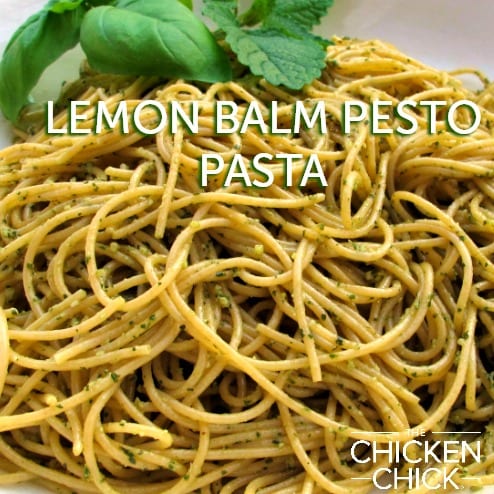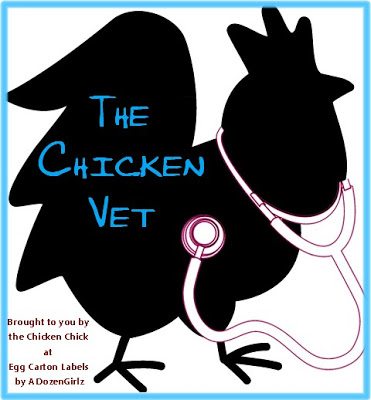Every winter when the mercury dips, charming images of backyard chickens being fed a comforting-looking breakfast of oatmeal by their devoted caretakers on cold mornings begin appearing online.
Prepare to be shocked by the truth about the detrimental effect of an oat meal on chickens. While oats may be a healthy breakfast for us, chickens are not people and an oat meal is neither nutritious, nor safe for chickens. Due to the complex nature of poultry nutrition and physiology, I enlisted the assistance of poultry nutritionist, Dr. Patrick Biggs to explain the problems with an oat meal for chickens.

Dr. Patrick Biggs, PhD., poultry nutritionist, and me
“A laying hen requires approximately 38 nutrients daily, each in a specific amount. A complete feed contains multiple grains and other components that are carefully blended to achieve the correct balance of those nutrients in precise amounts. Oats/oatmeal are not a complete or balanced source of nutrition for hens and adding oatmeal to a hen’s diet dilutes the complete nutrition contained in her feed. A diluted diet is not even the most damaging aspect of feeding an oat meal to chickens, but let’s look at the nutritional problems with an oats breakfast compared to a complete layer feed.”

Oatmeal is a lousy start to a chicken’s day
“Chickens are grazers, not meal eaters; they graze throughout the day, which provides the fuel that allows them to keep warm on cold days. In cold weather, a hen can be expected to eat about 5 ounces of feed. For argument’s sake, let’s say she eats 2 ounces of feed in the morning. If the 2 ounces consist of a warm oat meal, she would get 3.65 g of protein compared to 9.07 g of protein in a complete feed. (assuming a mixture of 50% oats, 50% water, but the higher the percentage of water, the lower the protein.)”
The chart below illustrates the difference between 2 ounces of Layena® layer feed and 2 ounces of oats. All the nutrients are lower in the oat meal compared to a layer feed meal. The differences in calcium and phosphorus are tremendous between and oatmeal. The B-vitamins are lower in oatmeal and Vitamins A, D, and E are nearly non-existent. Those deficiencies will negatively impact egg production and bone strength in hens eating oatmeal. Since 2 ounces of this oat meal accounts for 40% of the bird’s diet for that day, she would begin her day nutritionally in the hole.”

The Anti-nutritional factor, Beta Glucan: The Shocking Effect on Hens
“Oats (both cooked and raw) contain an antinutritional factor, 1 beta glucan, that a hen cannot digest. Beta-glucan binds with water in the intestines, resulting in the formation of gels that thicken the contents of the intestines,2(known as digesta) preventing a hen from properly digesting food and absorbing nutrients in the oats, and in anything she eats while beta glucan remains in her body.”


This photo of an abnormal intestine of a hen with necrotic enteritis shows the intestine filled with gas

This photo shows inside the intestine of a hen with necrotic enteritis. Large amounts of mucus and numerous hemorrhages are visible. (this portion of the lower small intestine, aka: jejunum)
This malabsorption then causes thick, sticky droppings that create other health hazards by increasing the moisture content of litter. Wet litter poses risks to respiratory health, foot pad health, and fosters an environment ripe for pathogen growth. This thickened digesta has also been shown cause necrotic enteritis, (aka: rot gut. See photos above.) a bacterial condition that destroys the chicken’s intestinal wall.2 Even in relatively small amounts, the effects of beta glucan can range from a mild reduction in egg laying to death.3
WINTER MYTH BUSTING Q&A WITH DR. BIGGS
Q: Does adding cinnamon or cayenne pepper to oatmeal or chicken feed contribute to the respiratory health, circulation, blood flow or mucous membrane health of a hen?
Dr. Biggs: No. There has been some research done on the concentrated oils of certain herbs to commercial poultry that live in different environments than the average backyard chicken. Feed additive companies take cinnamon, oregano, cayenne pepper, and several other herbs and remove the oils from them. Since those oils degrade pretty quickly when exposed to oxygen, the concentrated oils are then applied to feed in a specific way that keeps them from volatilizing. The result of commercial chickens eating this feed is a change in the microbial population of their digestive tract, which allows good bacteria to grow while killing bad bacteria. Feeding your chickens the same herbs or spices that you season your food with has no positive effect on your hens’ health. I am not aware of any study evaluating the impact of any herb and its direct effect on respiratory health, circulation, blood flow, mucus membranes, etc. Studies in this area pertaining to human anatomy and health do not apply to chickens.
Q: Does cayenne pepper help prevent frostbite in chickens by improving digestion and circulatory health?
Dr. Biggs: No.Providing your birds with a dry shelter that is free from wind and drafts is the best way to keep your chickens from getting frostbite.
Q: Does cinnamon improve the respiratory health of chickens?
Dr. Biggs: No. Management practices that include good biosecurity, a clean coop, a nutritionally complete diet, clean water, and limiting the amount of respirable dust that the birds breathe keeps a chicken’s respiratory system healthy.
Q: Does a warm breakfast help warm a chicken in cold weather
Dr. Biggs: No. A chicken has a body temperature about 10 degrees warmer than humans and a coat of feathers for insulation that offers approximately 22 times more insulation than skin and muscle for the same thickness because they trap air.4 In cold weather, keep hens healthy and comfortable by providing them with a dry living space out of the wind with access to a complete feed and clean drinking water.

A hen’s winter survival depends on a nutritionally complete diet, when she eats oatmeal for breakfast, her diet is diluted and she becomes incapable of absorbing the essential nutrients in her chicken feed. We spend good money on high quality complete feeds – it is a disservice to our flocks to dilute the nutrient balance in those feeds by offering them food items they do not need and worse: meals that actually hurt them.
CITATIONS
1 http://articles.extension.org/pages/66921/antinutritional-factors-in-feed-ingredients
“Antinutritional factors are substances that when present in animal feed or water reduce the availability of one or more nutrients…antinutritional factors can adversely affect the health of your poultry flock.”
2 http://articles.extension.org/pages/65436/beta-glucans
Beta-glucans bind with water in the intestines, resulting in the formation of gels that increase the viscosity of the intestinal contents. The increase in viscosity of the digesta associated with increased gel formation adversely affects digestion and absorption of nutrients. The viscous nature of the digesta can also result in sticky droppings, which increases the moisture content of litter, thereby reducing the air quality in the poultry house. High intestinal viscosity has also been shown to be associated with digestive and health problems. The decreased digesta passage rate makes colonization with potentially pathogenic bacteria easier. Necrotic enteritis is a breakdown of the intestinal wall. It is typically caused by Clostridium perfringens, an anaerobic bacterium often found in small numbers in the intestinal tract of poultry. At low levels, C. perfringens do not typically cause problems to the host. At higher levels, however, necrotic enteritis can be a serious disease problem. Compounds that interfere with the intake, availability, or metabolism of nutrients in the animal are referred to as anti-nutritional factors. Their biological effects can range from a mild reduction in animal performance to death, even at relatively small intakes.
4 http://thermalnet.missouri.edu/fundamentals.html Feathers, fur, and wool give about 22 times more insulation than skin and muscle for the same thickness because they trap air.
Kathy Shea Mormino
Affectionately known internationally as The Chicken Chick®, Kathy Shea Mormino shares a fun-loving, informative style to raising backyard chickens. …Read on


shop my SPONSORS
Every winter when the mercury dips, charming images of backyard chickens being fed a comforting-looking breakfast of oatmeal by their devoted caretakers on cold mornings begin appearing online.
Prepare to be shocked by the truth about the detrimental effect of an oat meal on chickens. While oats may be a healthy breakfast for us, chickens are not people and an oat meal is neither nutritious, nor safe for chickens. Due to the complex nature of poultry nutrition and physiology, I enlisted the assistance of poultry nutritionist, Dr. Patrick Biggs to explain the problems with an oat meal for chickens.

Dr. Patrick Biggs, PhD., poultry nutritionist, and me
“A laying hen requires approximately 38 nutrients daily, each in a specific amount. A complete feed contains multiple grains and other components that are carefully blended to achieve the correct balance of those nutrients in precise amounts. Oats/oatmeal are not a complete or balanced source of nutrition for hens and adding oatmeal to a hen’s diet dilutes the complete nutrition contained in her feed. A diluted diet is not even the most damaging aspect of feeding an oat meal to chickens, but let’s look at the nutritional problems with an oats breakfast compared to a complete layer feed.”

Oatmeal is a lousy start to a chicken’s day
“Chickens are grazers, not meal eaters; they graze throughout the day, which provides the fuel that allows them to keep warm on cold days. In cold weather, a hen can be expected to eat about 5 ounces of feed. For argument’s sake, let’s say she eats 2 ounces of feed in the morning. If the 2 ounces consist of a warm oat meal, she would get 3.65 g of protein compared to 9.07 g of protein in a complete feed. (assuming a mixture of 50% oats, 50% water, but the higher the percentage of water, the lower the protein.)”
The chart below illustrates the difference between 2 ounces of Layena® layer feed and 2 ounces of oats. All the nutrients are lower in the oat meal compared to a layer feed meal. The differences in calcium and phosphorus are tremendous between and oatmeal. The B-vitamins are lower in oatmeal and Vitamins A, D, and E are nearly non-existent. Those deficiencies will negatively impact egg production and bone strength in hens eating oatmeal. Since 2 ounces of this oat meal accounts for 40% of the bird’s diet for that day, she would begin her day nutritionally in the hole.”

The Anti-nutritional factor, Beta Glucan: The Shocking Effect on Hens
“Oats (both cooked and raw) contain an antinutritional factor, 1 beta glucan, that a hen cannot digest. Beta-glucan binds with water in the intestines, resulting in the formation of gels that thicken the contents of the intestines,2(known as digesta) preventing a hen from properly digesting food and absorbing nutrients in the oats, and in anything she eats while beta glucan remains in her body.”


This photo of an abnormal intestine of a hen with necrotic enteritis shows the intestine filled with gas

This photo shows inside the intestine of a hen with necrotic enteritis. Large amounts of mucus and numerous hemorrhages are visible. (this portion of the lower small intestine, aka: jejunum)
This malabsorption then causes thick, sticky droppings that create other health hazards by increasing the moisture content of litter. Wet litter poses risks to respiratory health, foot pad health, and fosters an environment ripe for pathogen growth. This thickened digesta has also been shown cause necrotic enteritis, (aka: rot gut. See photos above.) a bacterial condition that destroys the chicken’s intestinal wall.2 Even in relatively small amounts, the effects of beta glucan can range from a mild reduction in egg laying to death.3
WINTER MYTH BUSTING Q&A WITH DR. BIGGS
Q: Does adding cinnamon or cayenne pepper to oatmeal or chicken feed contribute to the respiratory health, circulation, blood flow or mucous membrane health of a hen?
Dr. Biggs: No. There has been some research done on the concentrated oils of certain herbs to commercial poultry that live in different environments than the average backyard chicken. Feed additive companies take cinnamon, oregano, cayenne pepper, and several other herbs and remove the oils from them. Since those oils degrade pretty quickly when exposed to oxygen, the concentrated oils are then applied to feed in a specific way that keeps them from volatilizing. The result of commercial chickens eating this feed is a change in the microbial population of their digestive tract, which allows good bacteria to grow while killing bad bacteria. Feeding your chickens the same herbs or spices that you season your food with has no positive effect on your hens’ health. I am not aware of any study evaluating the impact of any herb and its direct effect on respiratory health, circulation, blood flow, mucus membranes, etc. Studies in this area pertaining to human anatomy and health do not apply to chickens.
Q: Does cayenne pepper help prevent frostbite in chickens by improving digestion and circulatory health?
Dr. Biggs: No.Providing your birds with a dry shelter that is free from wind and drafts is the best way to keep your chickens from getting frostbite.
Q: Does cinnamon improve the respiratory health of chickens?
Dr. Biggs: No. Management practices that include good biosecurity, a clean coop, a nutritionally complete diet, clean water, and limiting the amount of respirable dust that the birds breathe keeps a chicken’s respiratory system healthy.
Q: Does a warm breakfast help warm a chicken in cold weather
Dr. Biggs: No. A chicken has a body temperature about 10 degrees warmer than humans and a coat of feathers for insulation that offers approximately 22 times more insulation than skin and muscle for the same thickness because they trap air.4 In cold weather, keep hens healthy and comfortable by providing them with a dry living space out of the wind with access to a complete feed and clean drinking water.

A hen’s winter survival depends on a nutritionally complete diet, when she eats oatmeal for breakfast, her diet is diluted and she becomes incapable of absorbing the essential nutrients in her chicken feed. We spend good money on high quality complete feeds – it is a disservice to our flocks to dilute the nutrient balance in those feeds by offering them food items they do not need and worse: meals that actually hurt them.
CITATIONS
1 http://articles.extension.org/pages/66921/antinutritional-factors-in-feed-ingredients
“Antinutritional factors are substances that when present in animal feed or water reduce the availability of one or more nutrients…antinutritional factors can adversely affect the health of your poultry flock.”
2 http://articles.extension.org/pages/65436/beta-glucans
Beta-glucans bind with water in the intestines, resulting in the formation of gels that increase the viscosity of the intestinal contents. The increase in viscosity of the digesta associated with increased gel formation adversely affects digestion and absorption of nutrients. The viscous nature of the digesta can also result in sticky droppings, which increases the moisture content of litter, thereby reducing the air quality in the poultry house. High intestinal viscosity has also been shown to be associated with digestive and health problems. The decreased digesta passage rate makes colonization with potentially pathogenic bacteria easier. Necrotic enteritis is a breakdown of the intestinal wall. It is typically caused by Clostridium perfringens, an anaerobic bacterium often found in small numbers in the intestinal tract of poultry. At low levels, C. perfringens do not typically cause problems to the host. At higher levels, however, necrotic enteritis can be a serious disease problem. Compounds that interfere with the intake, availability, or metabolism of nutrients in the animal are referred to as anti-nutritional factors. Their biological effects can range from a mild reduction in animal performance to death, even at relatively small intakes.
4 http://thermalnet.missouri.edu/fundamentals.html Feathers, fur, and wool give about 22 times more insulation than skin and muscle for the same thickness because they trap air.








































This was interesting. I do throw a handful of oats in the chicken coop occasionally, to keep them entertained and give them something to search for. Is that a bad idea and if so what are better alternatives for bored chickens?
It’s not helpful. If your chickens need enrichment activities, use their chicken feed in different presentations. Scatter it on the ground in clean areas along the sides of the run, put it in a clean, dry empty water bottle with holes drilled in it and toss that on the ground for them to kick around like soccer ball as feed is knocked out, etc.